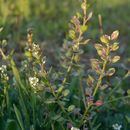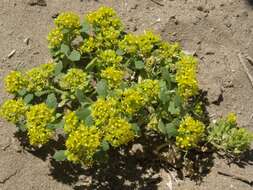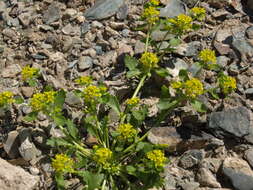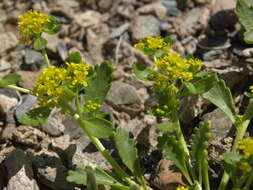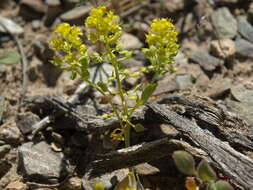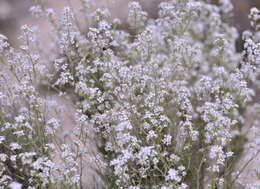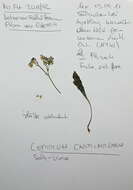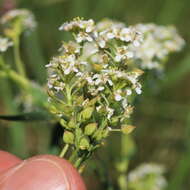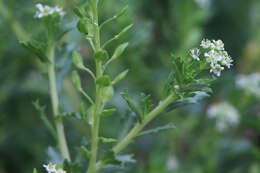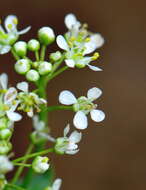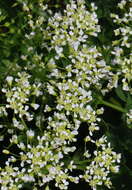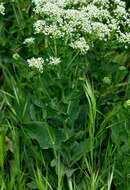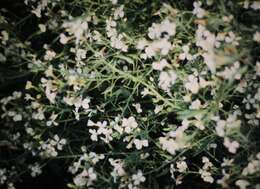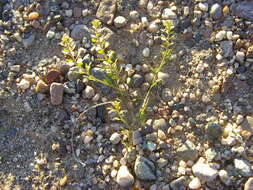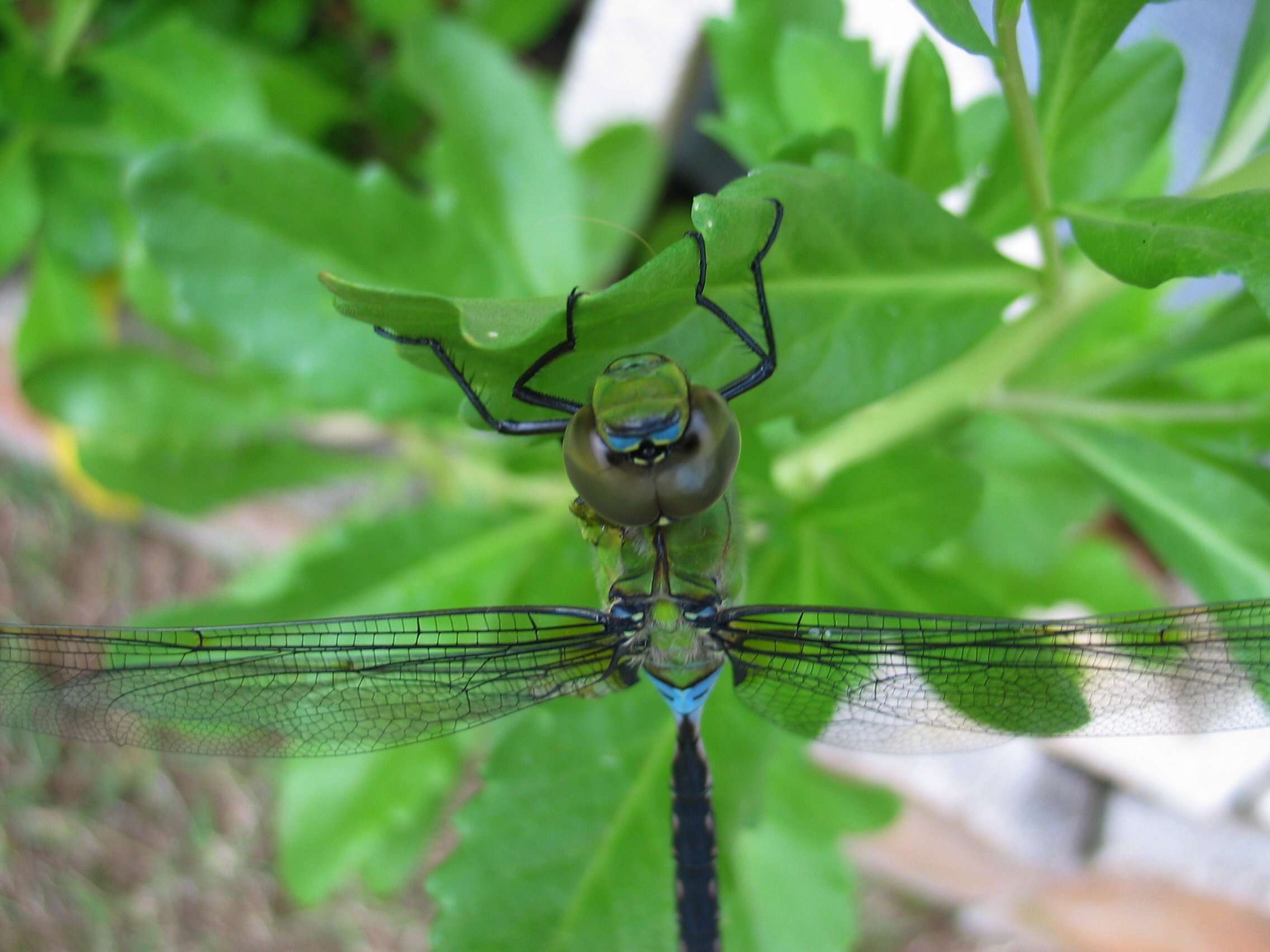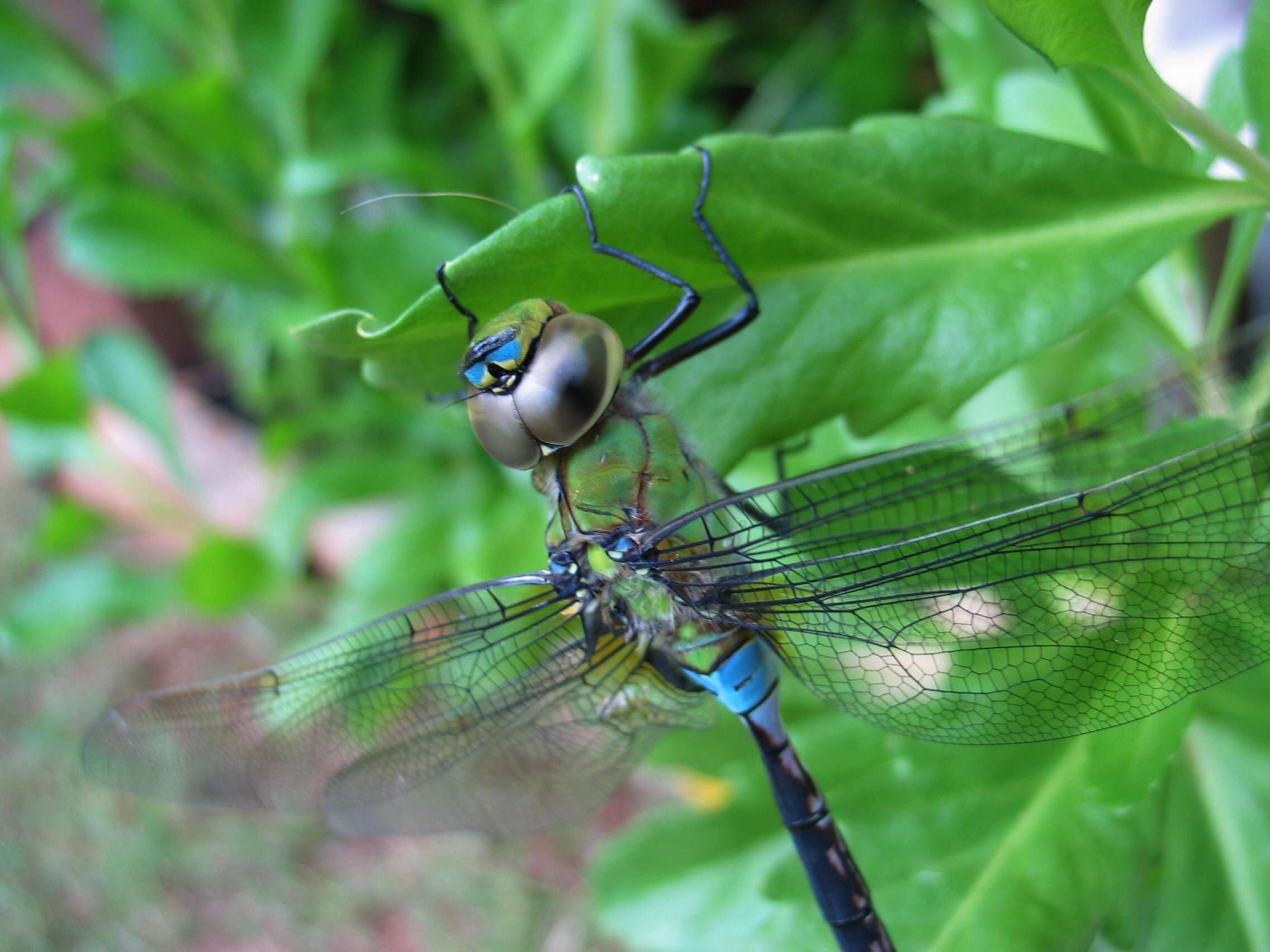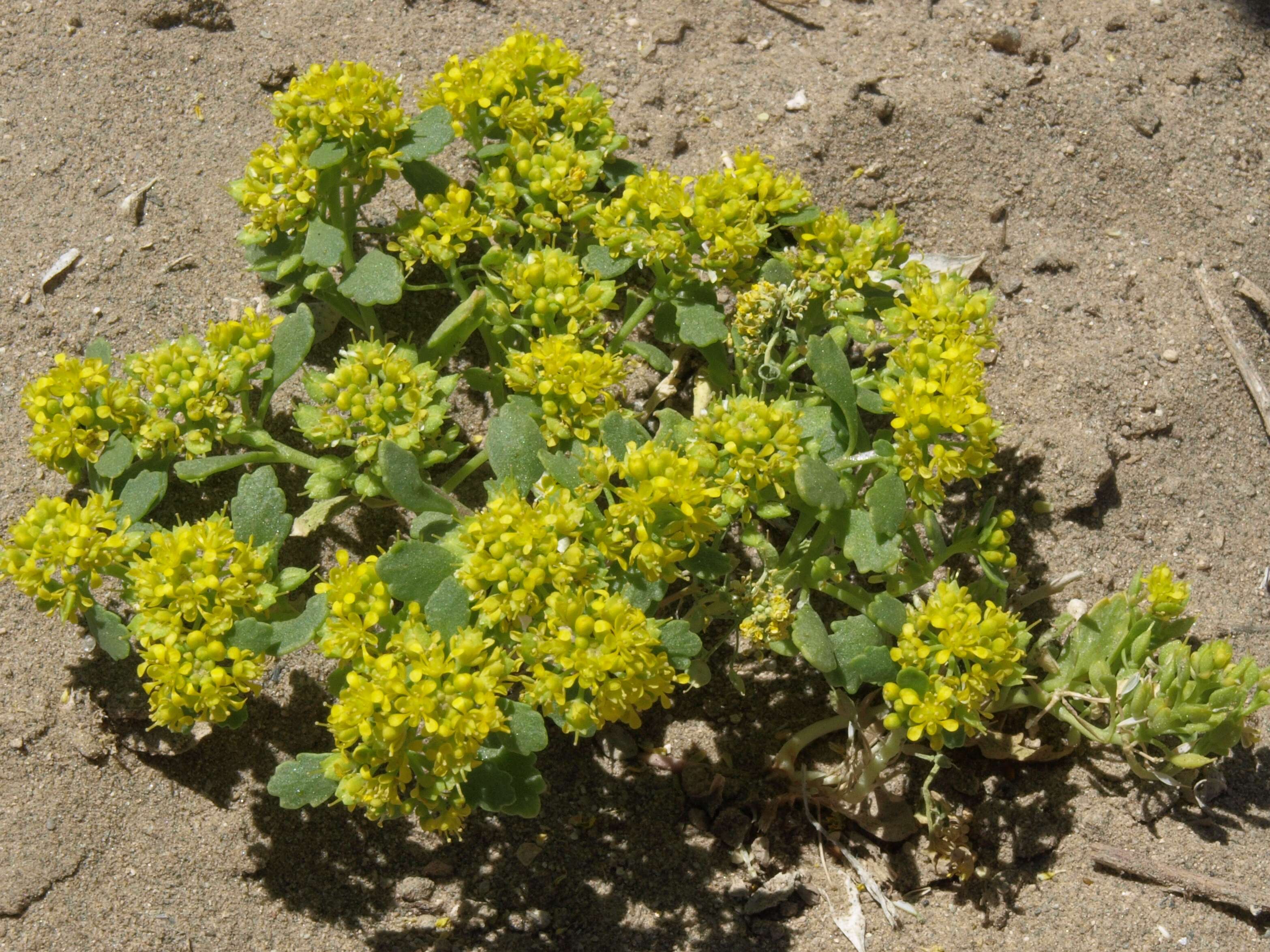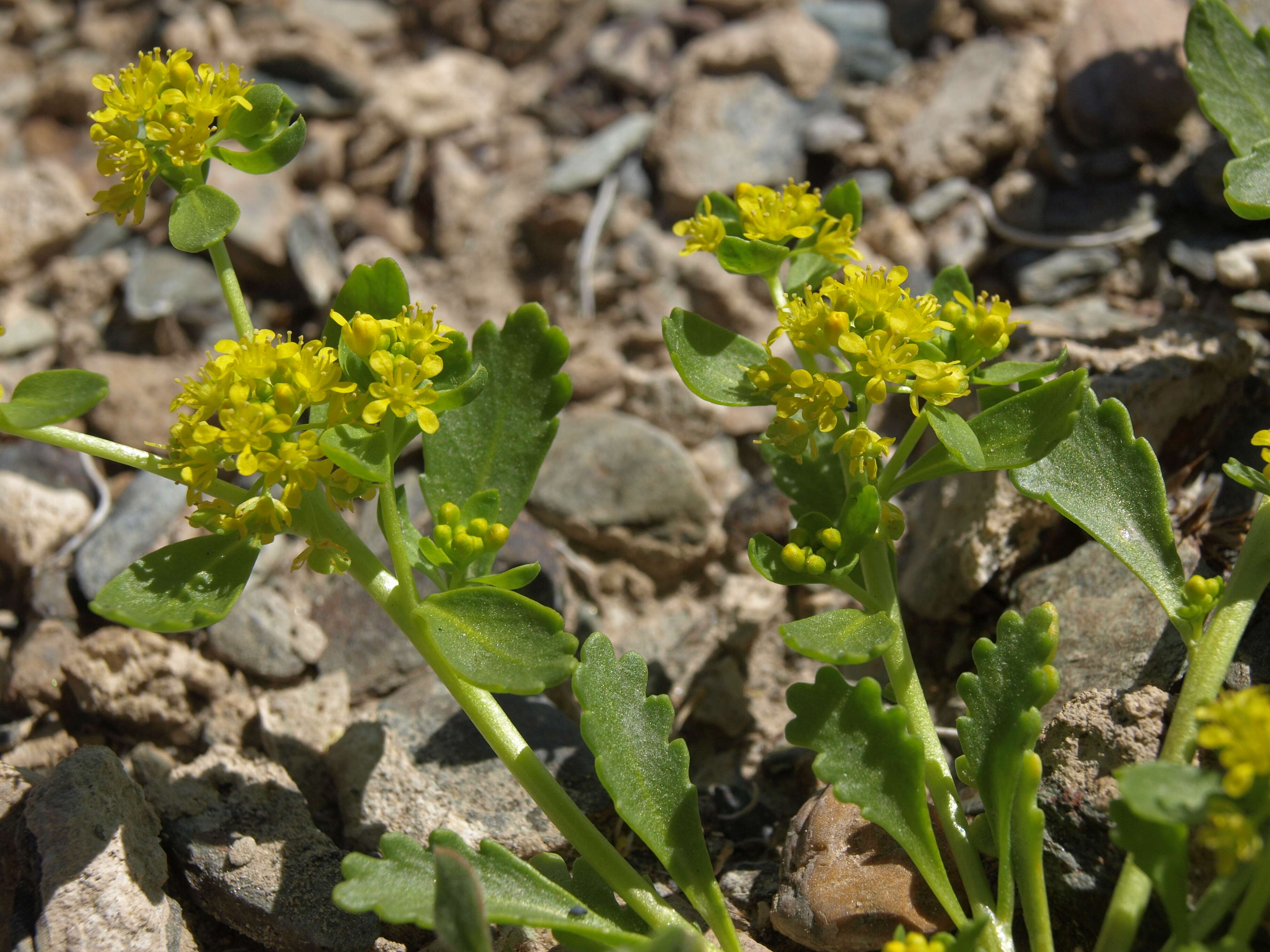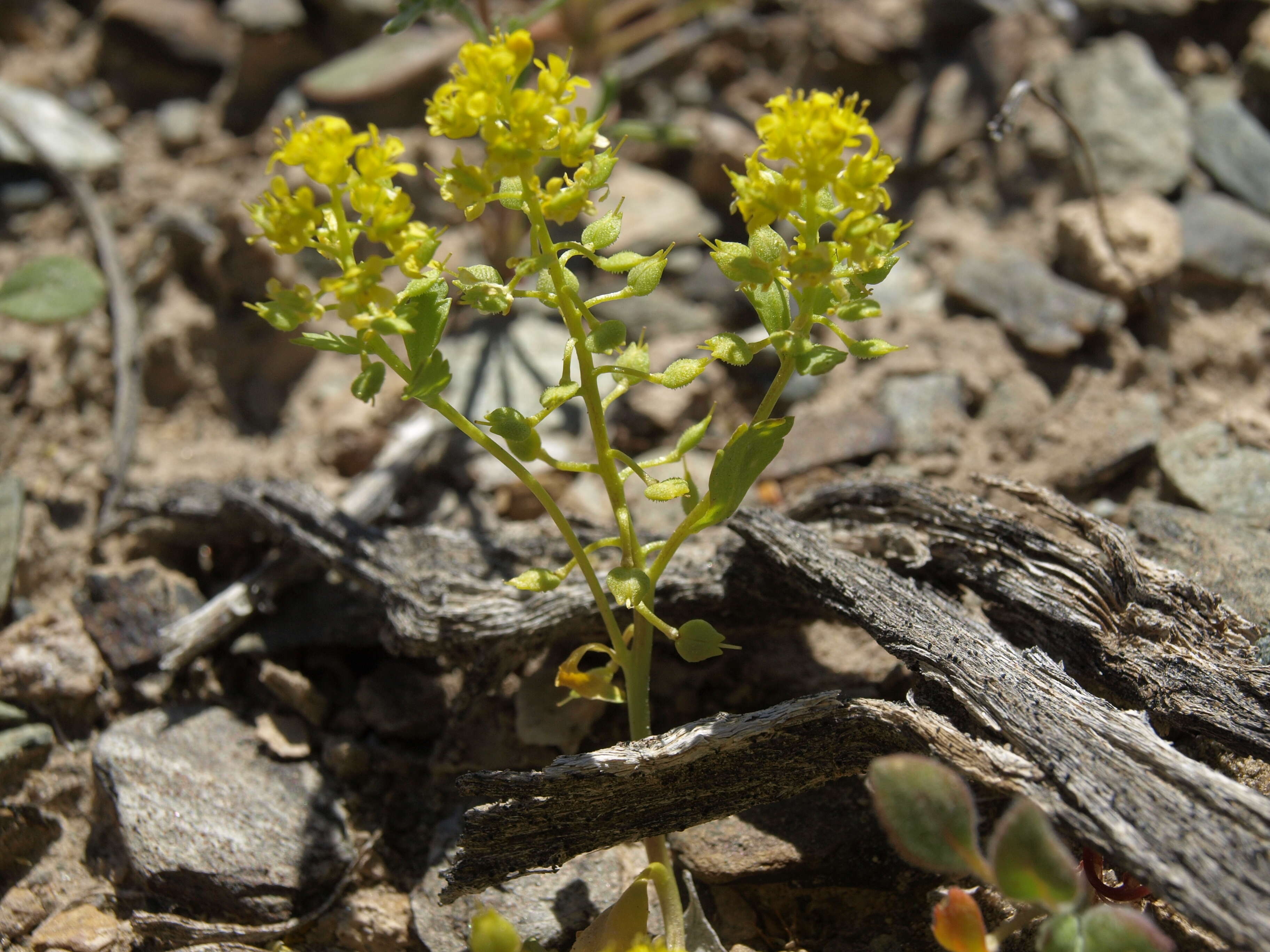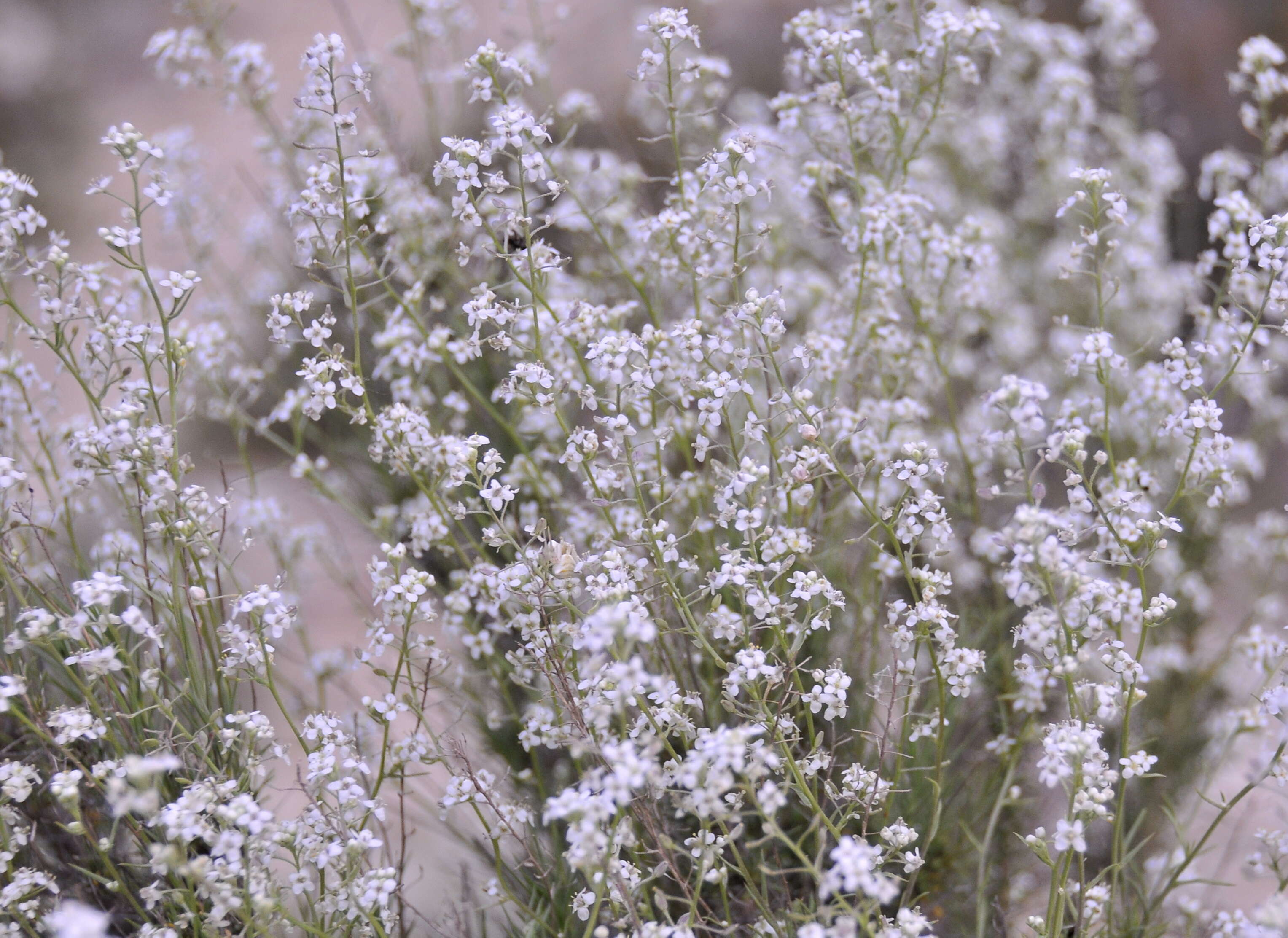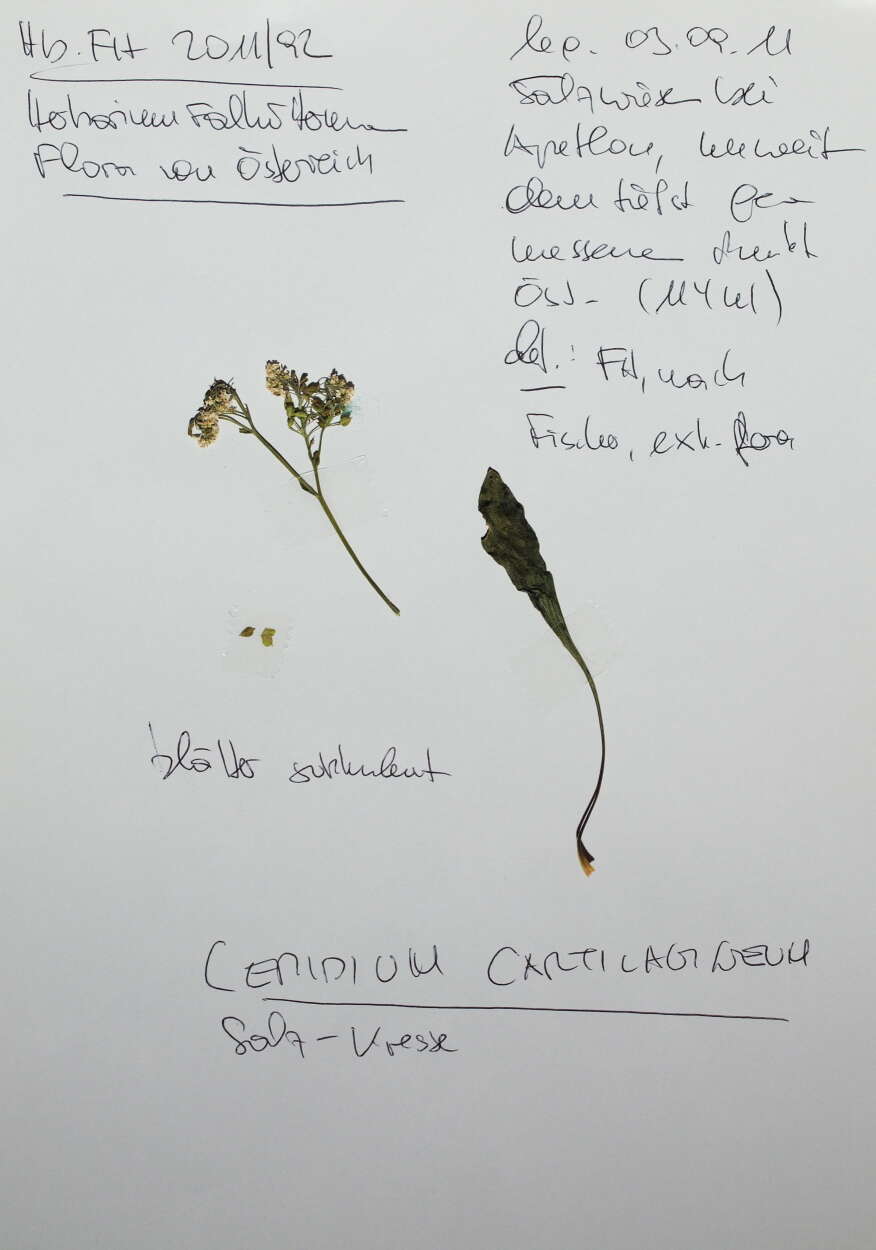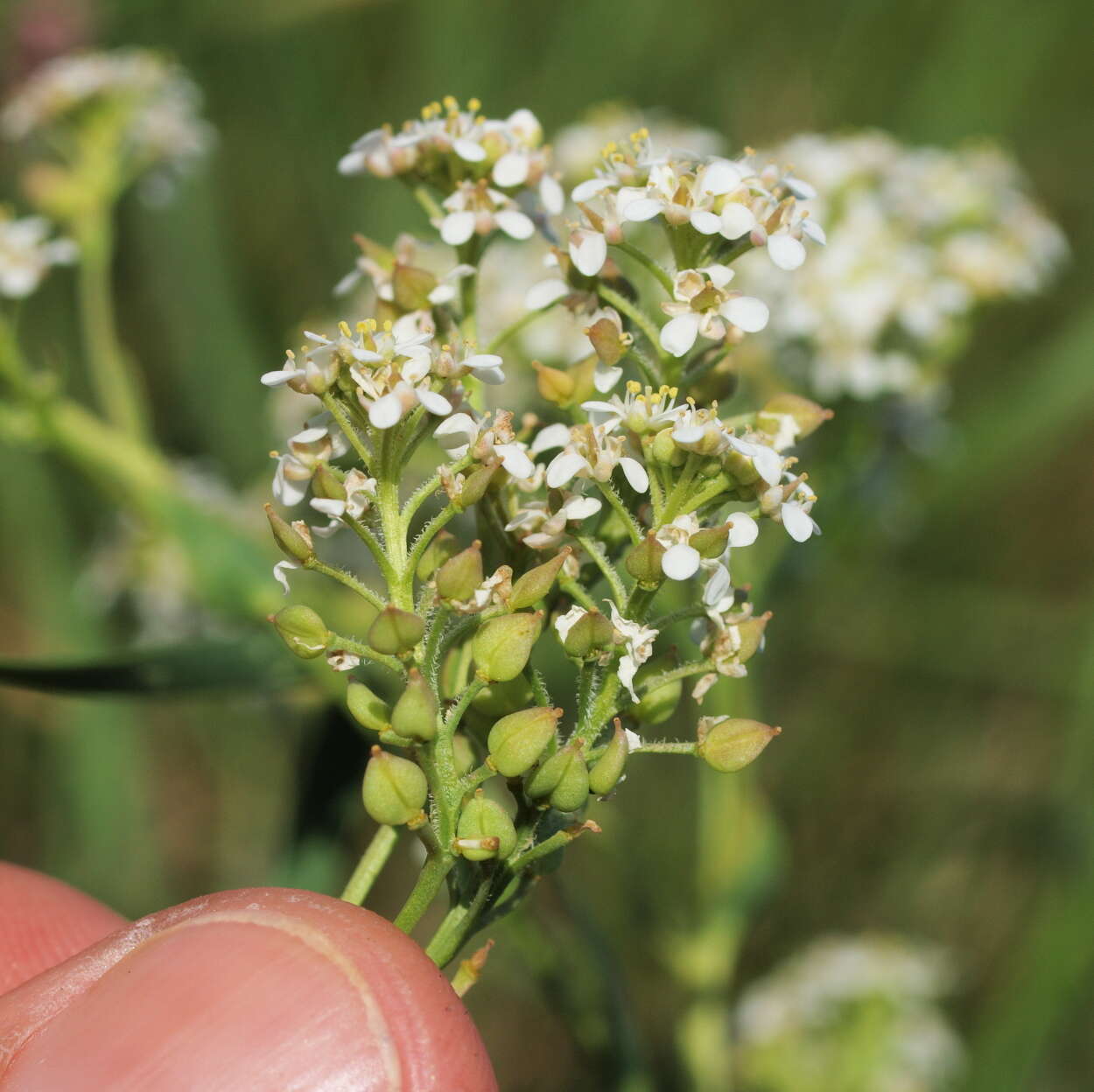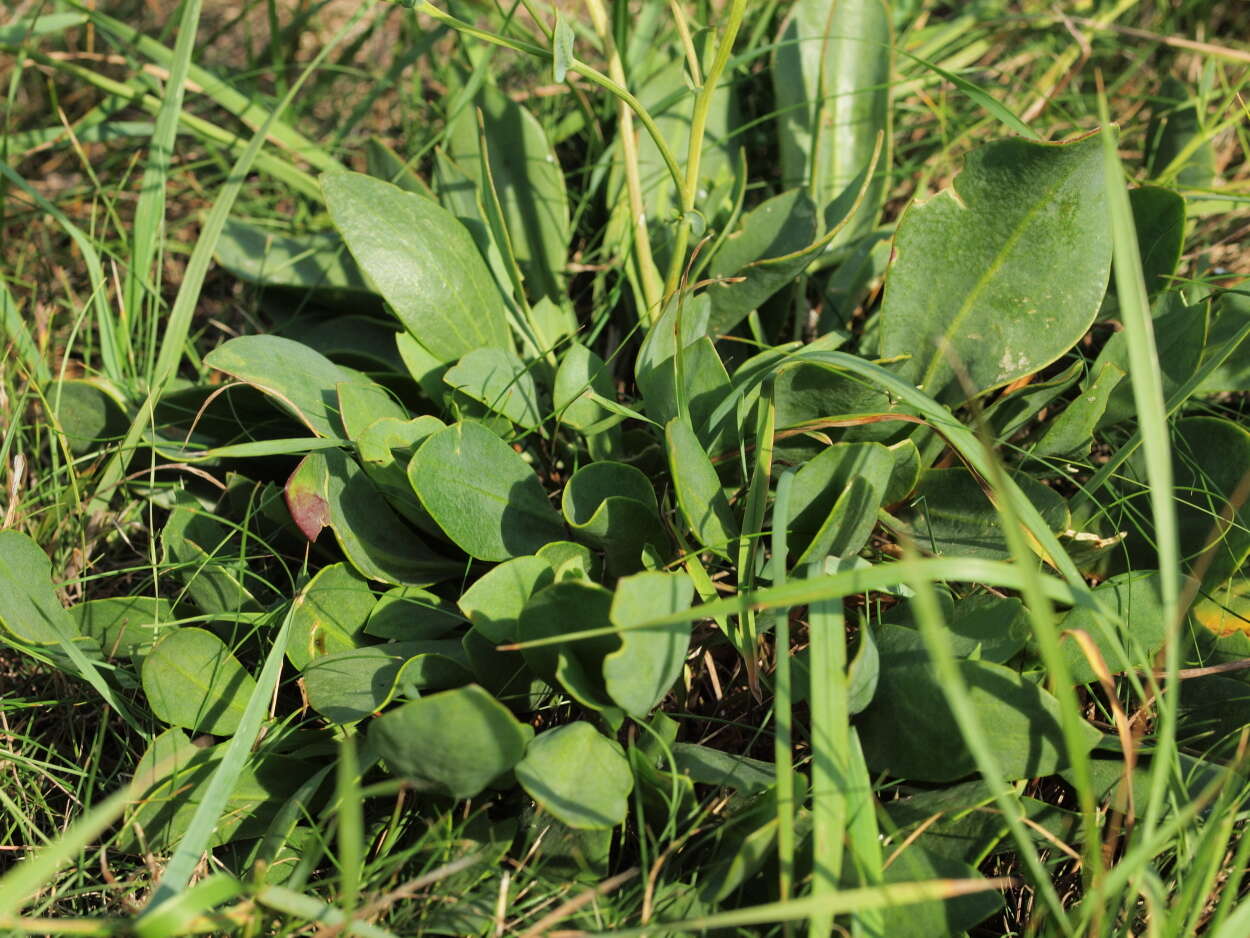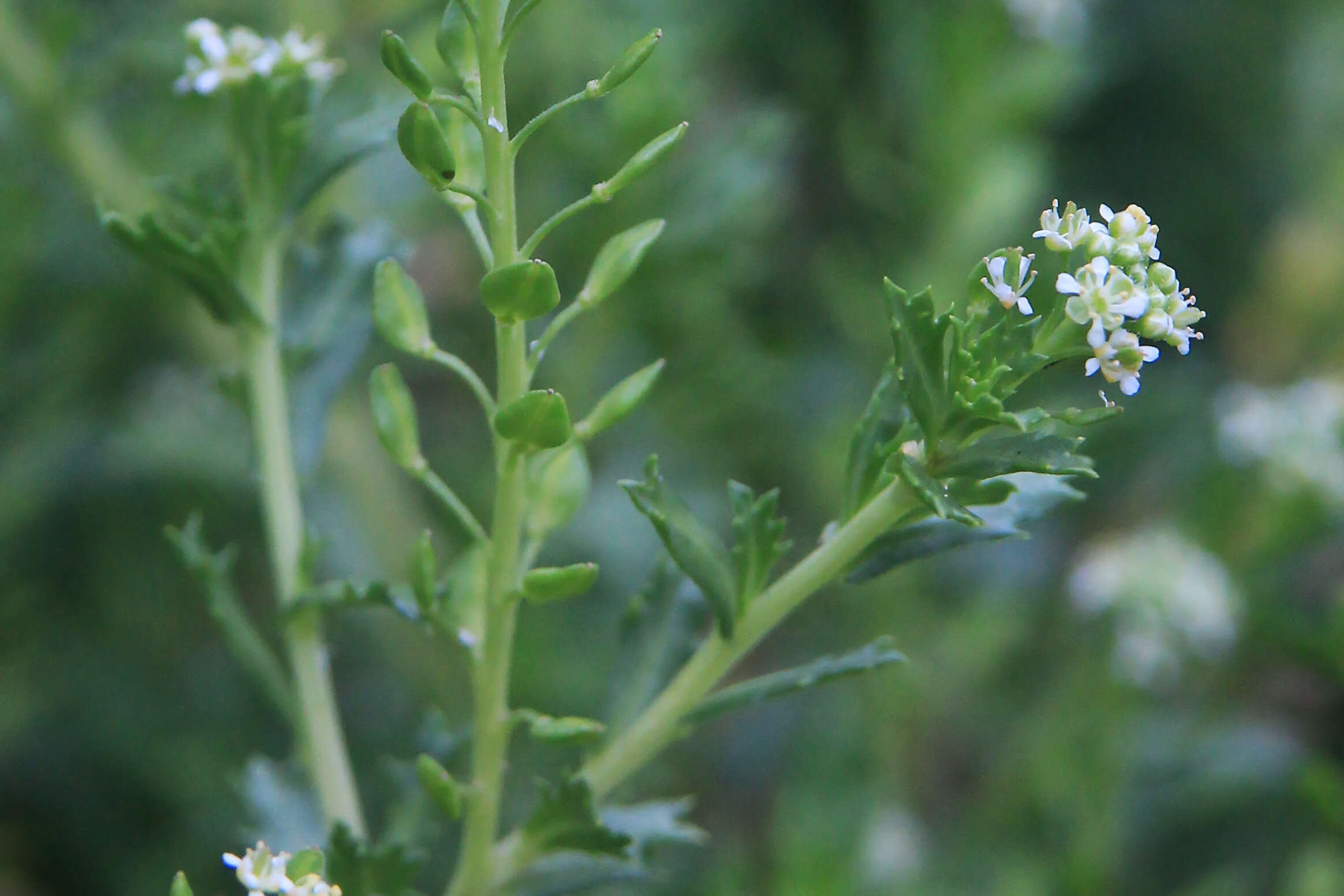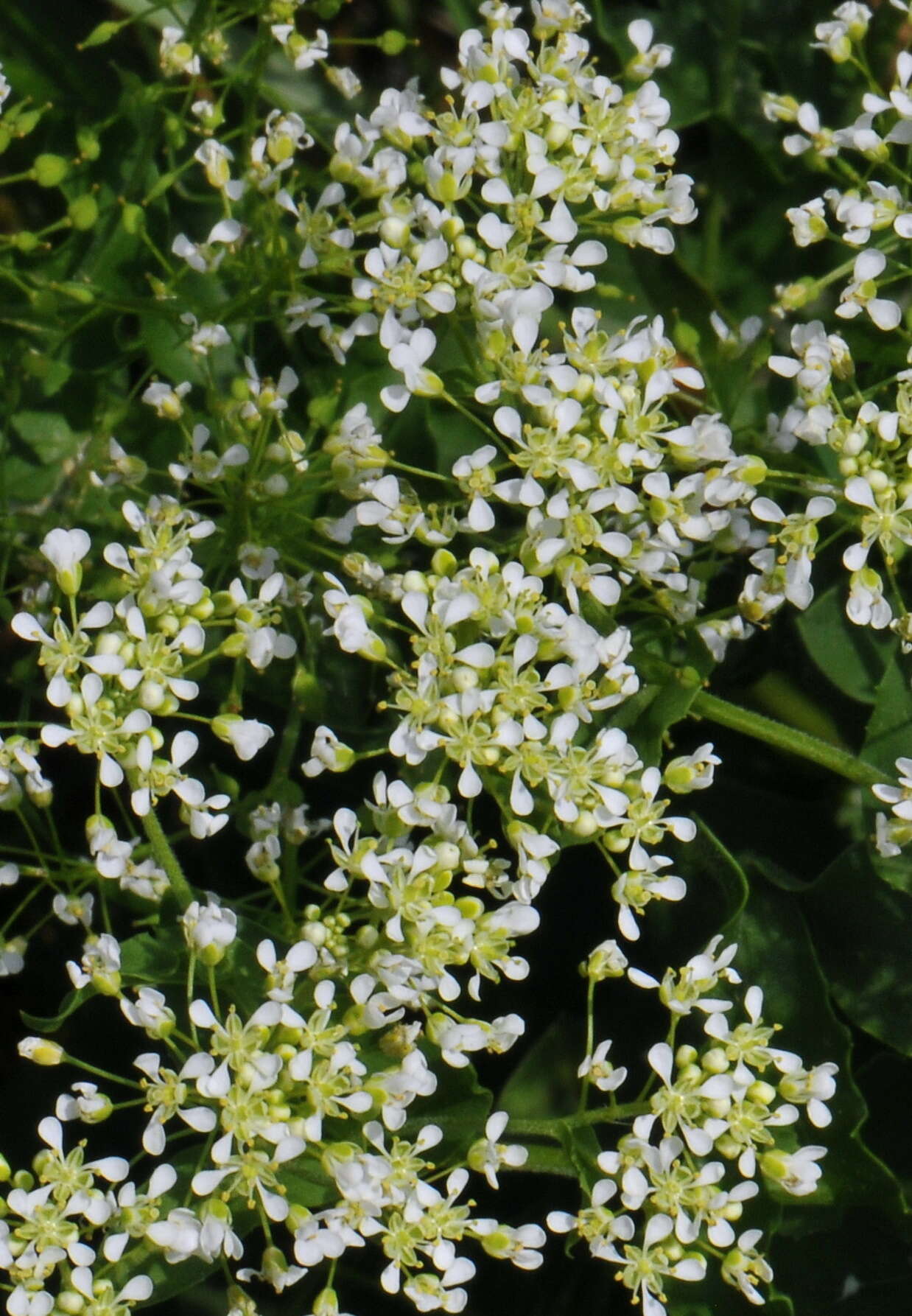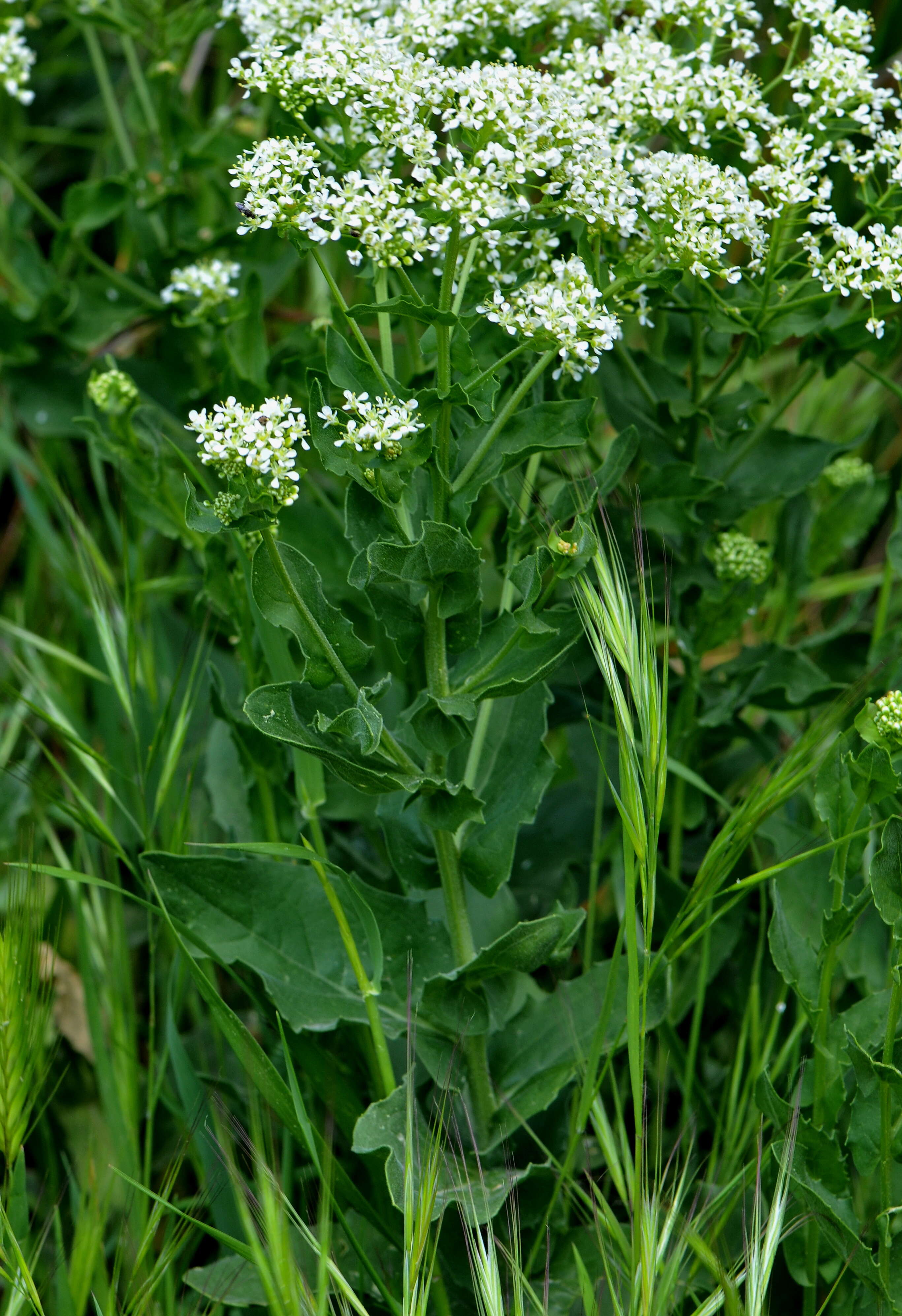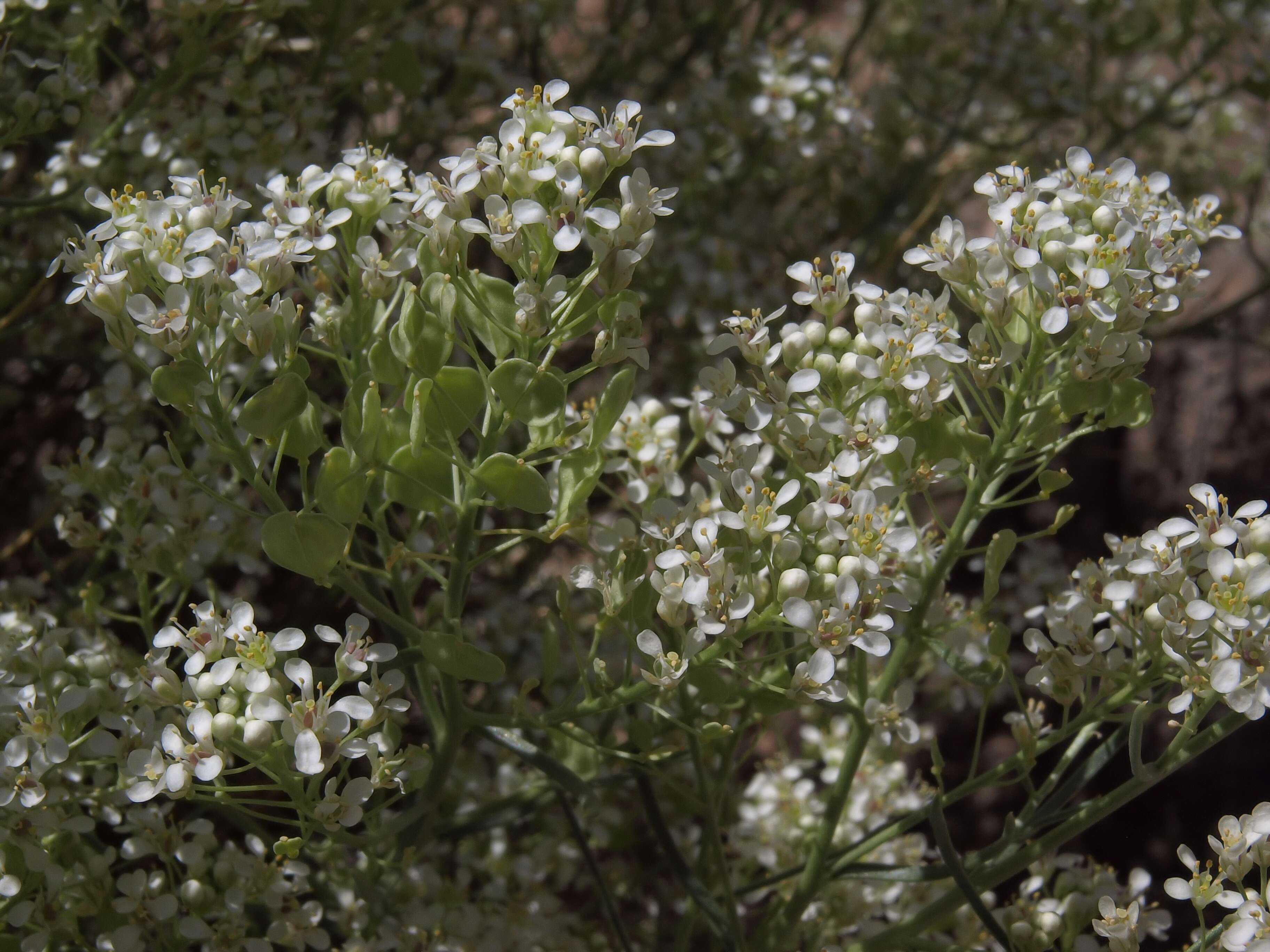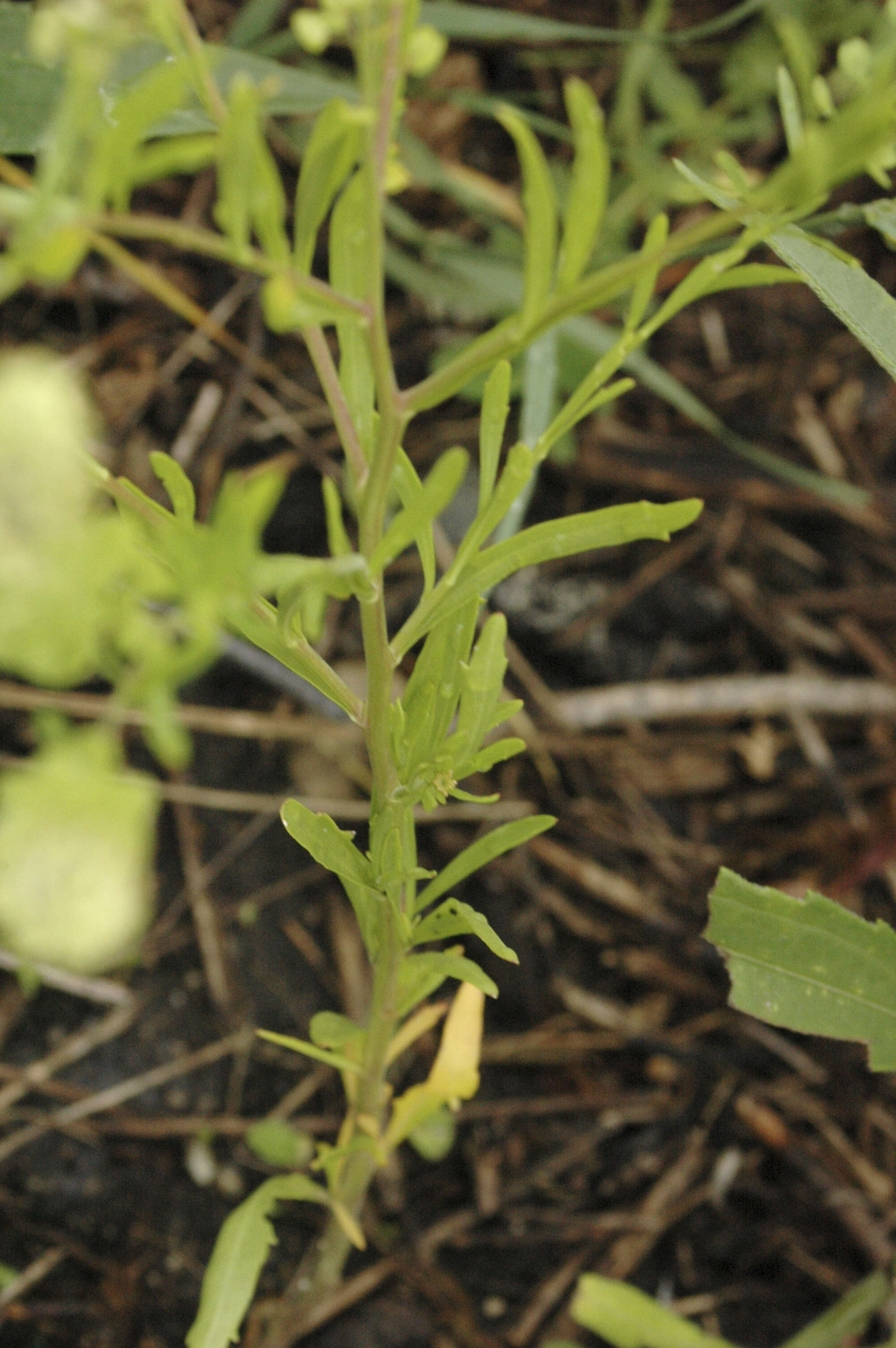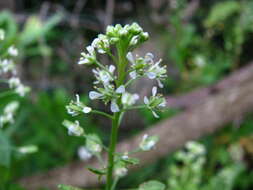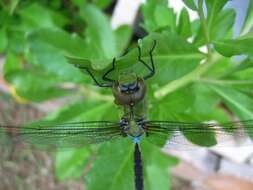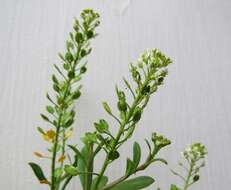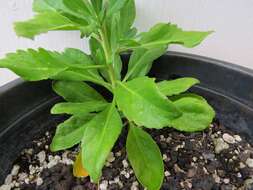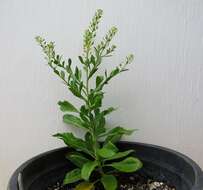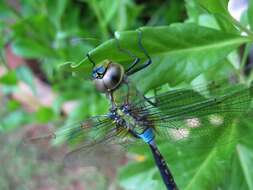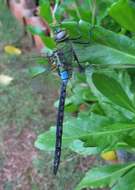-
naunau, Knn pepperwortBrassicaceae (Mustard family)Variety is endemic to the Hawaiian IslandsStatus: VulerableOahu (Cultivated)Etymology The generic name Lepidium is derived from the Greek lepis, scale, in reference to the small, flat, scale-like fruit.The specific epithet bidentatum is from the Latin bidentatus, double toothed, in reference to the serrated or toothed leaves.The plant was used medicinally by early Hawaiians. Leaves are eaten raw or cooked and used as for medicinal purposes in other parts of Polynesia.The edible leaves have a peppery smell and flavor to them and can be added to spice up green salads.
nativeplants.hawaii.edu/plant/view/Lepidium_bidentatum_o-...
-
-
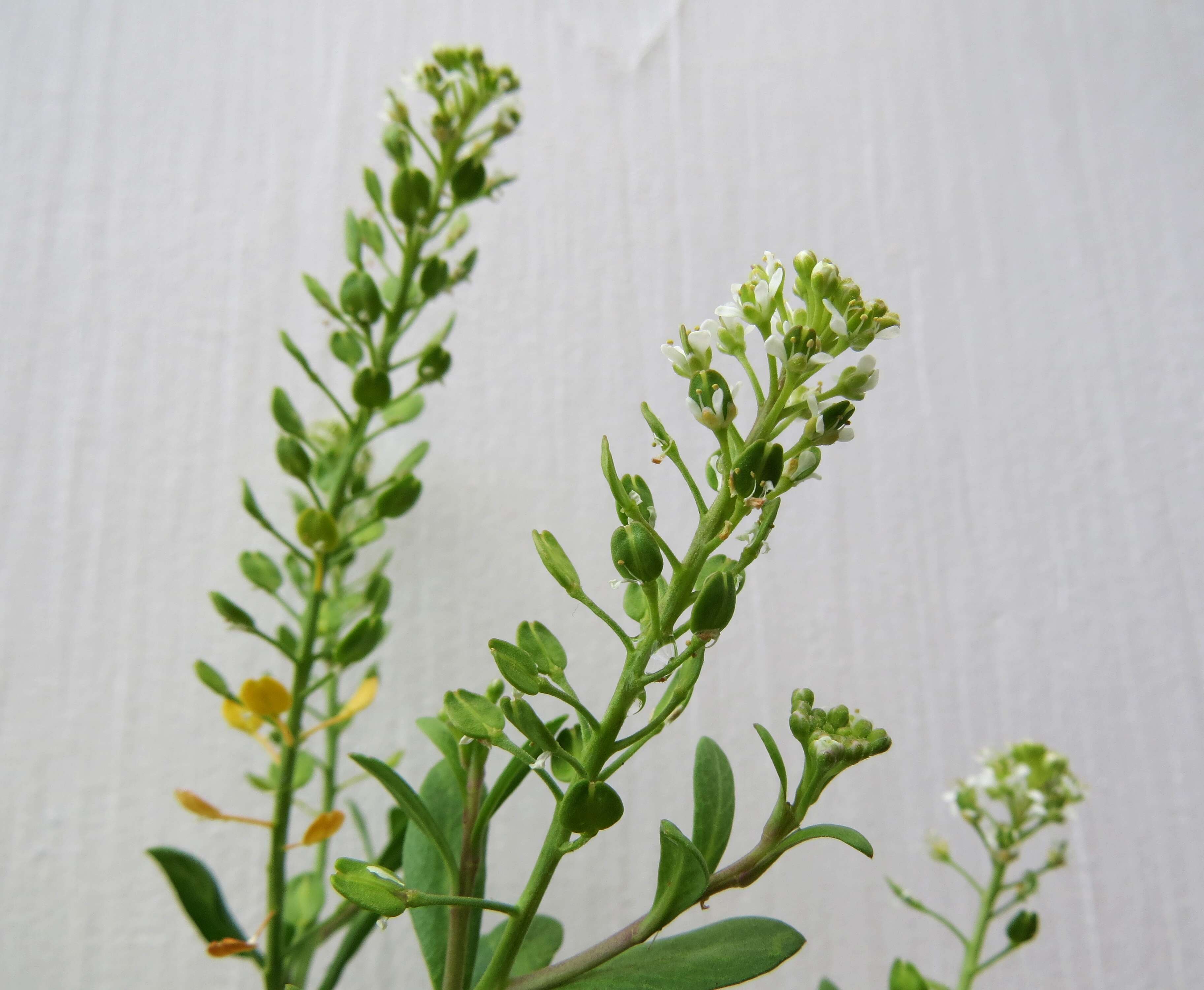
naunau, Knn pepperwortBrassicaceae (Mustard family)Variety is endemic to the Hawaiian Islands (all the Main Islands, except Niihau and Kahoolawe. In the Northwest Islands it is found on Kure Atoll (Knemilohai) and Pearl & Hermes Atoll (Holoikauaua), but now extinct on Midway (Pihemanu) and Laysan (Kau).Status: VulnerableOahu (Cultivated)Leaves
www.flickr.com/photos/dweickhoff/17207875825/in/datetaken...Habit
www.flickr.com/photos/dweickhoff/17020356470/in/datetaken...The plant was used medicinally by early Hawaiians. Leaves are eaten raw or cooked and used as for medicinal purposes in other parts of Polynesia.The edible leaves have a peppery smell and flavor to them and can be added to spice up green salads. Etymology The generic name Lepidium is derived from the Greek lepis, scale, in reference to the small, flat, scale-like fruit.The specific epithet bidentatum is from the Latin bidentatus, double toothed, in reference to the serrated or toothed leaves.The specific epithet o-wahaiense has reference to an old spelling version of O-Waihi for Hawaii.Interestingly, author William Bright notes this regarding Owyhee County (Idaho): "From Chinook Jargon [owihi] 'Sandwich Islands, Hawaii, borrowed either from English or from the Hawaiian form Hawaii, at a time in the early nineteenth century when a number of Hawaiians had settled in the Pacific Northwest (D. Kinkade p.c.) The placename Owyhee also occurs in Ore. (Malheur Co.)."
nativeplants.hawaii.edu/plant/view/Lepidium_bidentatum_o-...
-
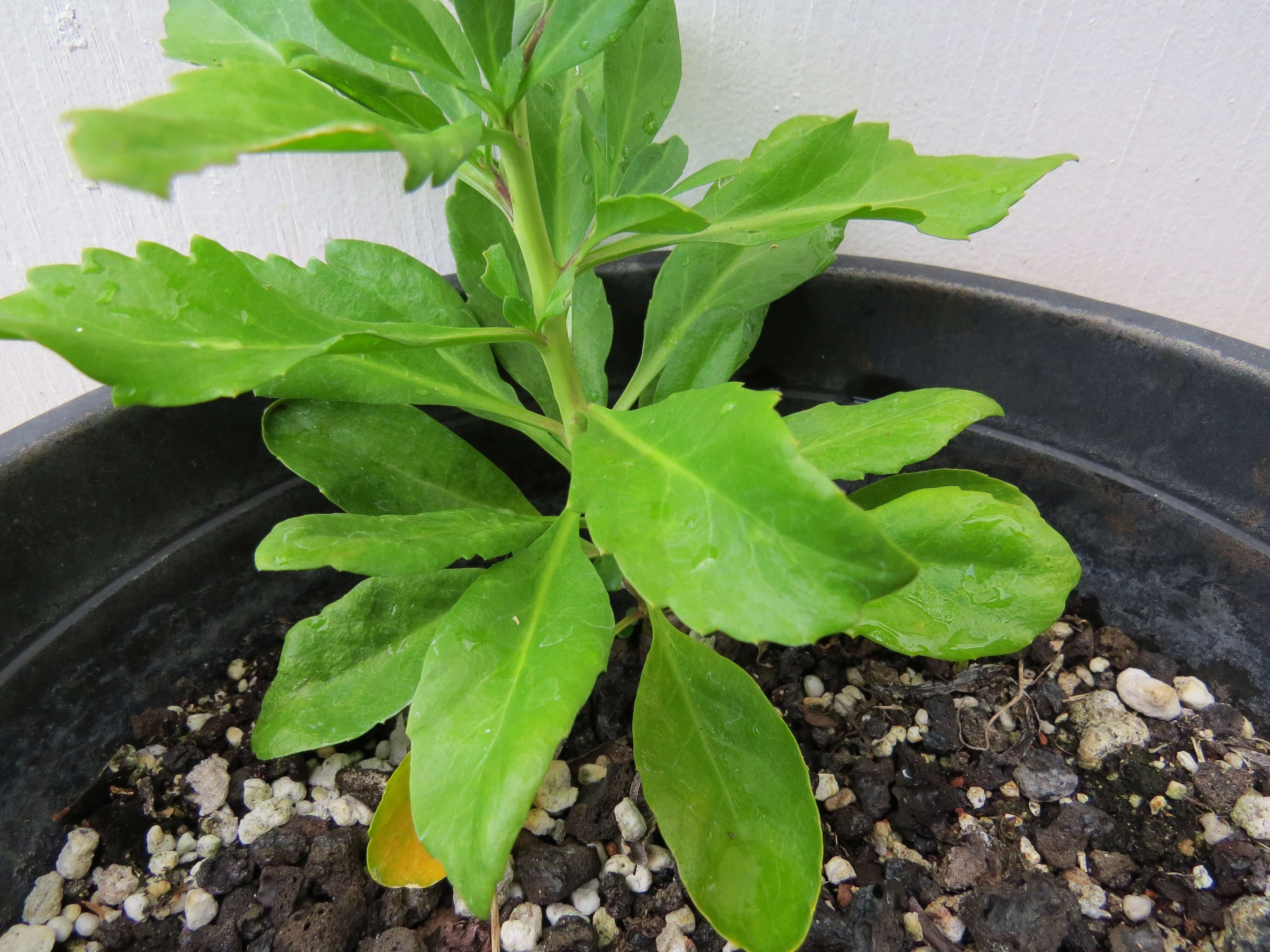
naunau, Knn pepperwortBrassicaceae (Mustard family)Variety is endemic to the Hawaiian Islands (all the Main Islands, except Niihau and Kahoolawe. In the Northwest Islands it is found on Kure Atoll (Knemilohai) and Pearl & Hermes Atoll (Holoikauaua), but now extinct on Midway (Pihemanu) and Laysan (Kau).Status: VulnerableOahu (Cultivated)Flowers
www.flickr.com/photos/dweickhoff/17020123838/in/datetaken...Habit
www.flickr.com/photos/dweickhoff/17020356470/in/datetaken...The plant was used medicinally by early Hawaiians. Leaves are eaten raw or cooked and used as for medicinal purposes in other parts of Polynesia.The edible leaves have a peppery smell and flavor to them and can be added to spice up green salads. Etymology The generic name Lepidium is derived from the Greek lepis, scale, in reference to the small, flat, scale-like fruit.The specific epithet bidentatum is from the Latin bidentatus, double toothed, in reference to the serrated or toothed leaves.The specific epithet o-wahaiense has reference to an old spelling version of O-Waihi for Hawaii.Interestingly, author William Bright notes this regarding Owyhee County (Idaho): "From Chinook Jargon [owihi] 'Sandwich Islands, Hawaii, borrowed either from English or from the Hawaiian form Hawaii, at a time in the early nineteenth century when a number of Hawaiians had settled in the Pacific Northwest (D. Kinkade p.c.) The placename Owyhee also occurs in Ore. (Malheur Co.)."
nativeplants.hawaii.edu/plant/view/Lepidium_bidentatum_o-...
-
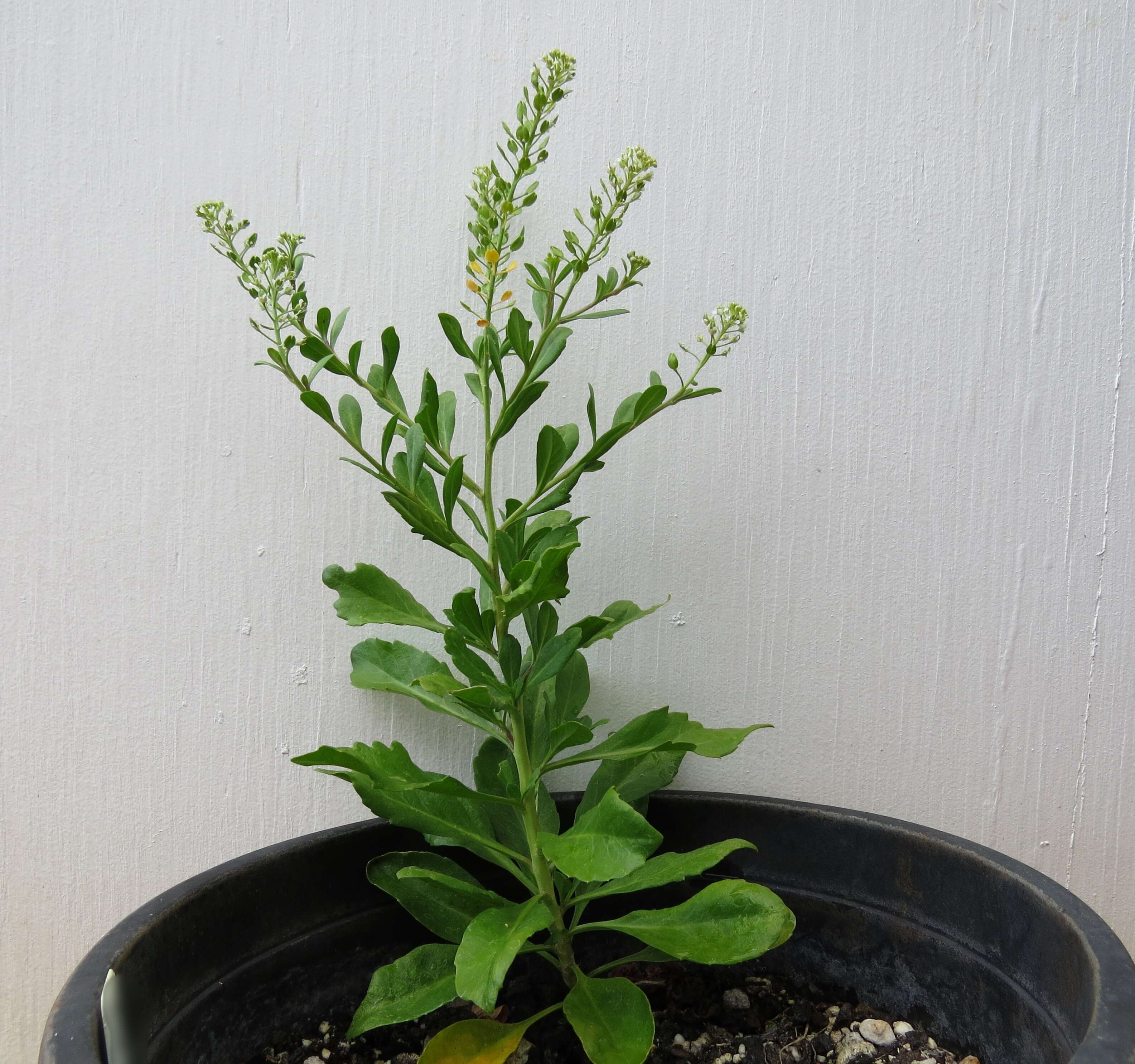
naunau, Knn pepperwortBrassicaceae (Mustard family)Variety is endemic to the Hawaiian Islands (all the Main Islands, except Niihau and Kahoolawe. In the Northwest Islands it is found on Kure Atoll (Knemilohai) and Pearl & Hermes Atoll (Holoikauaua), but now extinct on Midway (Pihemanu) and Laysan (Kau).Status: VulnerableOahu (Cultivated)Flowers
www.flickr.com/photos/dweickhoff/17020123838/in/datetaken...Leaves
www.flickr.com/photos/dweickhoff/17207875825/in/datetaken...The plant was used medicinally by early Hawaiians. Leaves are eaten raw or cooked and used as for medicinal purposes in other parts of Polynesia.The edible leaves have a peppery smell and flavor to them and can be added to spice up green salads. Etymology The generic name Lepidium is derived from the Greek lepis, scale, in reference to the small, flat, scale-like fruit.The specific epithet bidentatum is from the Latin bidentatus, double toothed, in reference to the serrated or toothed leaves.The specific epithet o-wahaiense has reference to an old spelling version of O-Waihi for Hawaii.Interestingly, author William Bright notes this regarding Owyhee County (Idaho): "From Chinook Jargon [owihi] 'Sandwich Islands, Hawaii, borrowed either from English or from the Hawaiian form Hawaii, at a time in the early nineteenth century when a number of Hawaiians had settled in the Pacific Northwest (D. Kinkade p.c.) The placename Owyhee also occurs in Ore. (Malheur Co.)."
nativeplants.hawaii.edu/plant/view/Lepidium_bidentatum_o-...
-
-
-
California, United States
-
United States
-
United States
-
United States
-
Barranco de las Almunias Zaragoza: Aragn (Espaa) Familia: BrassicaceaeDistribucin: Espaa y N de frica (Marruecos y Argelia). En la Pennsula Ibrica en su mitad oriental. En Aragn su mxima extensin la alcanza en la Depresin del Ebro, desde Borja y Tauste hasta Alcaiz, con un ncleo aislado en Barbastro-Castillonroy. En el Sistema Ibrico se encuentra en Bordalba y el entorno de Calatayud (Zaragoza) y en Calamocha, Albarracn y desde Cuevas Labradas a Valacloche, en los valles del Alfambra y Turia (Teruel)Hbitat: Matorrales que crecen sobre suelos con alto contenido en yeso.Preferencia edfica: Basfila Gipscola Rango altitudinal: 190- 400 ( 1200 ) m Floracin: Abril - Mayo ( Junio )Forma Biolgica: Camfito sufruticosoExtractado del Atlas de la Flora de Aragn (Herbario de Jaca)
-
Barranco de las Almunias Zaragoza Familia: BrassicaceaeDistribucin: Espaa y N de frica (Marruecos y Argelia). En la Pennsula Ibrica en su mitad oriental. En Aragn su mxima extensin la alcanza en la Depresin del Ebro, desde Borja y Tauste hasta Alcaiz, con un ncleo aislado en Barbastro-Castillonroy. En el Sistema Ibrico se encuentra en Bordalba y el entorno de Calatayud (Zaragoza) y en Calamocha, Albarracn y desde Cuevas Labradas a Valacloche, en los valles del Alfambra y Turia (Teruel)Hbitat: Matorrales que crecen sobre suelos con alto contenido en yeso.Preferencia edfica: Basfila Gipscola Rango altitudinal: 190- 400 ( 1200 ) m Floracin: Abril - Mayo ( Junio )Forma Biolgica: Camfito sufruticosoExtractado del Atlas de la Flora de Aragn (Herbario de Jaca)
-
Hb. FH 20XX/YYY - Herbarium Falkner Hermann (20XX/No YYY) (DIN AX)leg.: Falkner Hermann, 20XX-YY-ZZ: Niedersterreich, Bezirk XYZ - LOCATION: 180 msm Quadrant 7964/4.det.: Falkner Hermann, nach Fischer & al., Exkursionsflora A/FL/SdT (2008 3. A.)Dt: NAME; English: NAMESynonyme: NAMENBurgenland, Seewinkel - salt marsh meadow (115 msm Quadrant 8267/3).German name: Salz-Kresse
von da
-
2011-09-03 Burgenland, Seewinkel - salt marsh meadow (115 msm Quadrant 8267/3).German name: Salz-KresseFlower and fruit.
-
2011-09-03 Burgenland, Seewinkel - salt marsh meadow (115 msm Quadrant 8267/3).German name: Salz-KresseLeaves (succulent).
-
Over 1000 views now, If anyone can enlighten me as to why this rather poor image is so interesting, I might get some better ones.
-
Familia: BRASSICACEAE (CRUCIFERAE)
-
Estepa sur de Zaragoza. Aragn (Espaa)Familia: BRASSICACEAE (CRUCIFERAE)Distribucin: Probablemente nativa del SW de Asia y S de Europa; repartida por casi toda la Pennsula Ibrica; en Aragn aparece bien distribuida por las proximidades de las zonas habitadas y se enrarece en las reas de montaa.Hbitat: Terrenos incultos, mrgenes de cultivo, junto a las vias de ferrocarril, cunetas y otros ambientes alterados con suelo removido y nitrogenado.Preferencia edfica: Indiferente. Vive tambin en suelos salobres.Rango altitudinal:100- 800 ( 1550 ) mFloracin: ( Marzo ) Abril - MayoFructificacin: Abril - JunioForma Biolgica: Hemicriptfito escaposoExtractado del Atlas de la Flora de Aragn (Herbario de Jaca)
-
Estepa sur de Zaragoza. Aragn (Espaa)Familia: BRASSICACEAE (CRUCIFERAE)Distribucin: Probablemente nativa del SW de Asia y S de Europa; repartida por casi toda la Pennsula Ibrica; en Aragn aparece bien distribuida por las proximidades de las zonas habitadas y se enrarece en las reas de montaa.Hbitat: Terrenos incultos, mrgenes de cultivo, junto a las vias de ferrocarril, cunetas y otros ambientes alterados con suelo removido y nitrogenado.Preferencia edfica: Indiferente. Vive tambin en suelos salobres.Rango altitudinal:100- 800 ( 1550 ) mFloracin: ( Marzo ) Abril - MayoFructificacin: Abril - JunioForma Biolgica: Hemicriptfito escaposoExtractado del Atlas de la Flora de Aragn (Herbario de Jaca)
-
Stanley, Tasmania, Australia
-
Nevada, United States
-
image of Lepidium virginicum COMMON PEPPERCRESS at the James Woodworth Prairie Preserve - stem and leaf detail
-
Florance to Tucson Highway, Arizona, Feb 26, 2010.

